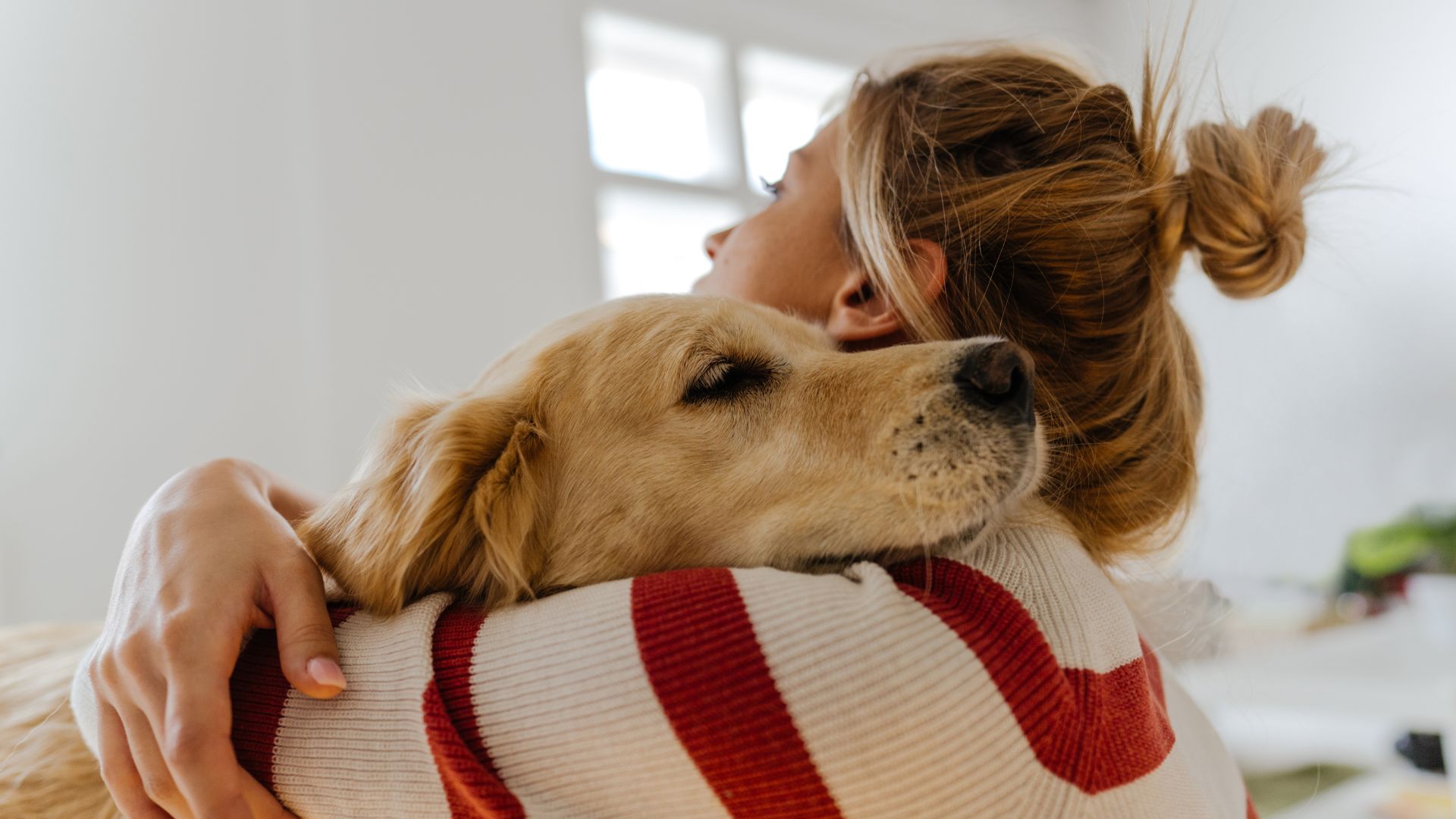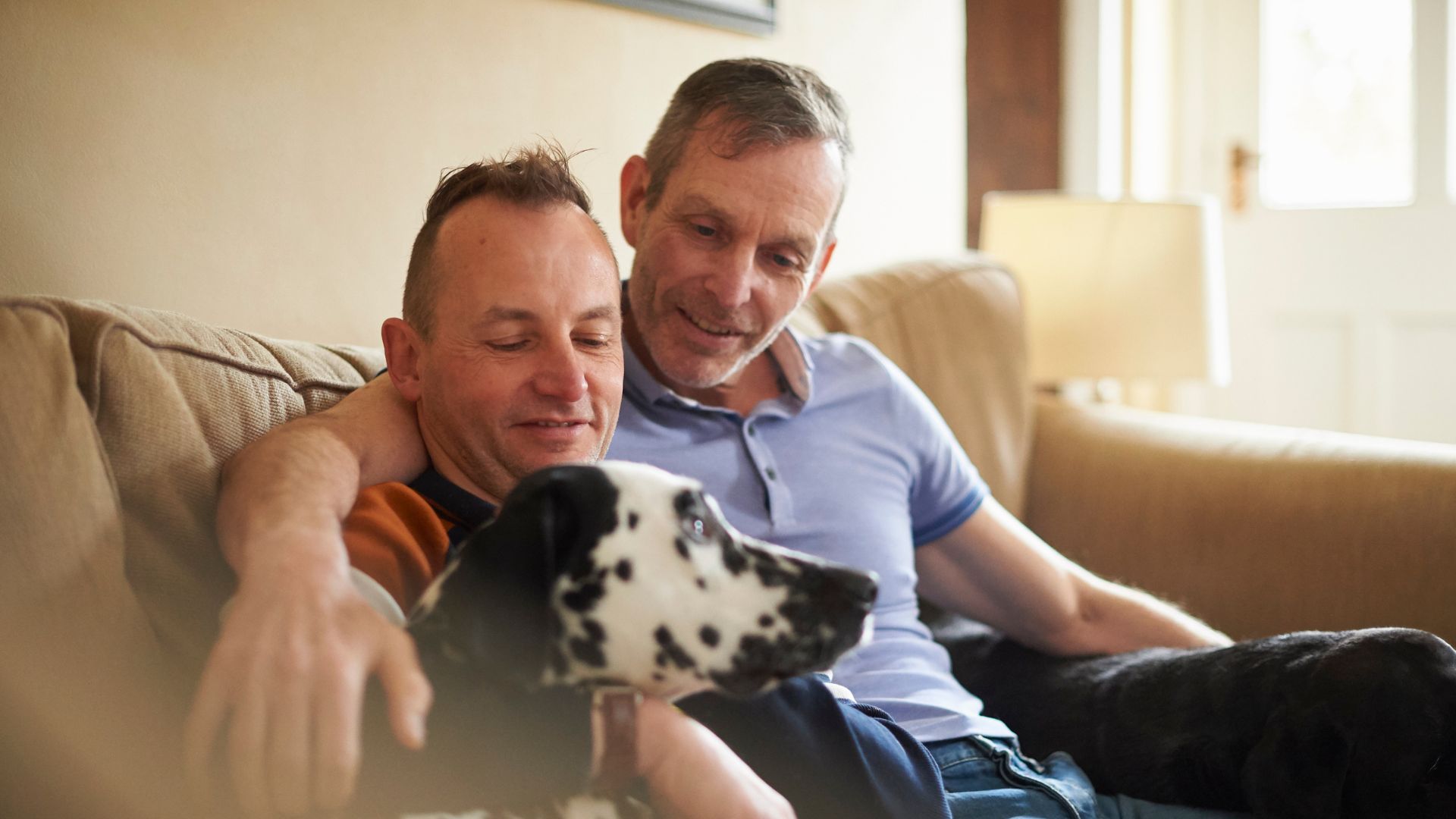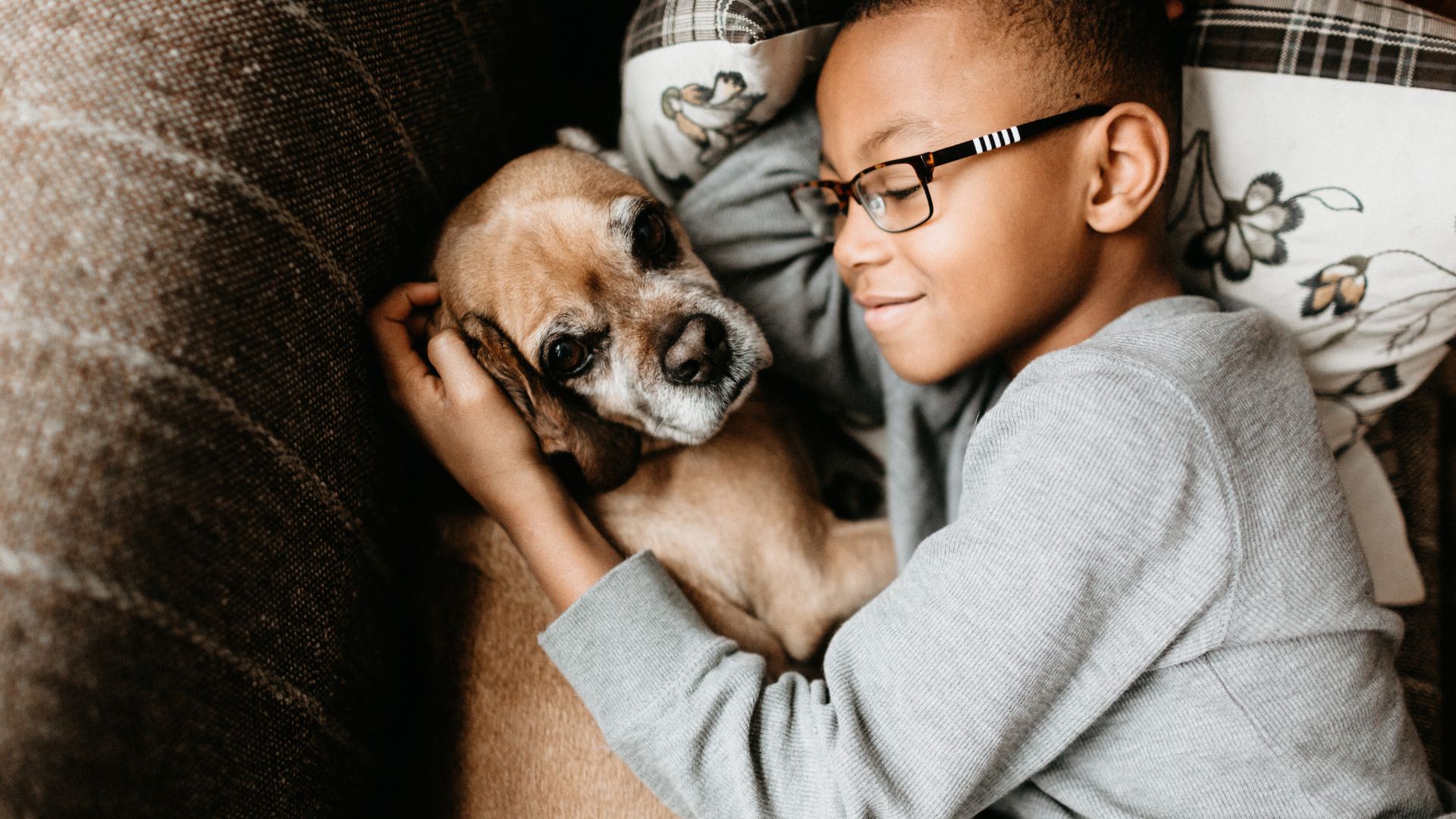Do dogs like hugs?
We love to give our pooches a fuss but do dogs actually like hugs?

For us doggy lovers, there's nothing better than giving our dog a big hug, but do dogs like hugs? If you've noticed your dog squirms a bit when you hug him, it could be that he'd prefer a tasty biscuit to a loving embrace.
I've shared my life with nine dogs, and until a few years ago, I never considered whether they enjoyed hugging. As a trained behaviorist, I've noticed that many doggy parents hug their dogs and get mixed responses.
Some dogs are stoic. "Oh, mom's doing that again <sigh>. It will soon be over, hopefully." Other dogs seem to enjoy the physical contact and embrace the "game." However, most woofers prefer a treat like tasty, longest-lasting dog chews.
So, what's the answer? Do dogs like hugs or not? Let's discover the truth and examine expert research on hugging dogs. The results may surprise you.
Is it OK to hug my dog?
It depends on how you hug your dog and how he responds. We enjoy heart-to-heart hugs with our loved ones, but dogs do not hug each other. Indeed, face-to-face canine interactions are uncommon. Dogs tend to approach each other from the side, avoiding direct eye contact. It’s a canine social cue to show the other dog they are not aggressive.
Dogs love leaning into their furry pals and snuggling, and it may appear they are hugging in play games, but it's more like wrestling.
It's inadvisable to hug a dog new to the family because you haven't had time to build the bond. The dog could feel restricted and avoid contact. If you have a good relationship with your dog, it's easier to assess if he enjoys hugs, but it's always better to let the dog decide how much contact he wants.
PetsRadar Newsletter
Get the best advice, tips and top tech for your beloved Pets
How do dogs show they don’t like hugs?
According to a study by Stanley Coren, Ph. D., DSc., F.R.S.C. in Psychology Today., there are multiple signals when a dog isn't enjoying a hug. The author and professor of psychology at the University of British Columbia suggests a dog uncomfortable with hugging shows some or all of the following signs:
- Tongue-licking/chewing
- Ears down
- Face turned away from the hugger
- Showing the whites of the eyes
- Furrowed brow
- Tense jaw and tightly closed mouth
Professor Coren studied 250 dogs, of which 204 showed some signs of anxiety, discomfort or stress. 27 dogs responded neutrally, and only 19 woofers seemed comfortable with a hug. In summary, 81.6% of dogs appeared not to enjoy hugging.

How to determine if your dog enjoys hugging
Don’t despair if the study left you feeling sad. As a dog behaviorist and lifelong lover of woofers, I believe some dogs enjoy hugging. However, of the nine dogs I have had, only two of them actively sought out my attention for a hug.
Poppy, an 88 lb Weimaraner cross, used to climb on my lap and demand a hug. The tighter I held her, the happier she was. My dog, Luna, puts her front legs across my shoulders and makes groaning noises when I hug her. However, that leaves seven dogs that didn't enjoy a hug.
Top tips for getting a hug from your dog:
- Always let the hug be on your dog's terms.
- Hug gently, and don't restrain your dog.
- Let your doggo move away if he wants to.
- Observe your furry friend's body language: If he looks uneasy, end the hug.
What other ways are there to show a dog you love them?
If you have a close bond with your furry friend, but he doesn't enjoy hugs, there are still ways to share a cuddle. Most dogs enjoy snuggling by leaning against you and are happy for their pet parents to put an arm around them.
It's the full, both arms locked around the body hug that most dogs dislike. Offering a gentle hug is better as your dog feels less restricted.
Most dogs adore a belly rub. It's easy to notice if your dog is keen because your furry friend will roll over with his legs in the air. Your dog's body is relaxed, and his mouth is open, with a lolling tongue. If you stop rubbing, your woofer may paw your arm asking for more.
Some dogs enjoy their pet parents gently rubbing their ears. Choose a time when your dog is relaxed and start stroking his ear by holding it between your thumb and fingers. Start from the top of the ear and work down to the tip of the ear, working in the direction of the fur.
Stop after 20-30 seconds and assess how your dog responds. If he is calm, carry on. It’s a relaxing exercise for us pet parents, too.
See if your furry friend likes a gentle rub behind the base of his ear. Your dog may push his head into your hand, encouraging you to do more massage.

Is it OK for children to hug dogs?
One aspect most behaviorists advise against is allowing children to hug dogs. Young children tend to hug a dog around the neck and squeeze too tightly. If the dog reacts negatively, the child is in danger of getting bitten, something no parent wants.
Teach your children not to hug unfamiliar dogs because of the risks. It terrifies me when I am out working with a client's dog and a child runs up with open arms, and it's surprisingly common. Continuously monitor interactions between your lovely doggo and your child.
Despite the evidence, some dogs enjoy hugs, but it's essential not to make assumptions and check that your dog is happy with the attention. During my training, the teacher said we pet parents spend a lot of time "doing" things to our dogs without considering if the dog is happy about it.
After that, it changed how I interact with dogs. I try to give my dogs more choices now and let their personality blossom. Most nights, they lean against me on the couch, and I'm thrilled when Luna initiates a doggy hug.
Dogs are the greatest; we are lucky to share our lives with them. When you understand their behavior and can spot the signs they are happy or anxious, it transcends your bond.
Want to learn more about your dog? Here’s how to read your dog’s body language.

Jan is a dog behaviorist and writer living in the Cotswolds, UK. She has shared her life with dogs for over fifty years and is fascinated by behavior. She enjoys helping people better understand their dogs to develop a deep bond and enjoy time together. Jan particularly enjoys working with impulsive and reactive dogs as her legacy from helping Poppy, her rescue Weimaraner cross overcome fear reactivity.
